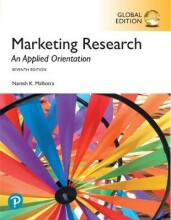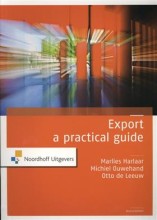Change diagnosis
34 important questions on Change diagnosis
Marvin Weisbord combined pieces of data, theories, research and inspirations to compose the six-box organisational model. It is based on six variables, which 6?
2. Structure: how do we distribute the work?
3. Reward: do all tasks have incentives?
4. Helpful mechanism: are the technologies coordinated in a good way?
5. Relationship: how do we deal with conflicts between people?
6. Leadership: does anyone keep variables in balance?
When an organisation needs improvement, what needs to happen with the variables and the relationships between these variables?
Based on the assumptions that organisational effectiveness consists of interaction of different factors and that a successful change take the connections between these factors into account, Waterman, Peters and Philips developed the 7 S framework
2. Strategy: how the company wants to obtain competitive success
3. Systems: daily procedures within departments
4. Style: patterns or attitudes of how managers behave in taking action
5. Staff: process of the development of human resources
6. Skills: the skills that dominate in certain departments
7. Super ordinate goals: vision of the organisation
- Higher grades + faster learning
- Never study anything twice
- 100% sure, 100% understanding
What does this 7S model want to emphasize?
Star model.
Galbraith argues that an organisation is most effective when all five components of the organisational design (star model) are aligned. What are the five components?
- structure: the formal relationships of authority and activities that can be graphically presented
- processes and lateral capability: the processes which can be formal or informal and coordinate the activities
- reward systems: measures and compensates performance so that individual actions and organisational objectives are aligned
- people practices: practices of human resources such as selection, development and performance management.
Starmodel.
What happens when there is a misalignment of these five factors?
On what assumption is the congruence model based?
What are according to the congruence model the four elements of the organisation?
- Individuals: knowledge, skills, needs and expectations of people within the organisation
- formal organisational arrangements: structure, processes and methods
- Informal organisation: implicit, unwritten norms, beliefs and behavior
Within the congruence model the organisation is seen as if it is in a transformational process. How does this process go?
What distinction is made within the Burke-Litwin model
Burke-Litwin Model
What are the four factors for transformational change?
Mission and strategy,
leadership
and organisational culture
these factors are on top of the chart of this model. It is intended that an organisation in a change situation finishes the diagram from top to bottom, thus from external environment to individual performance. This does not mean that the effects only occur from top to bottom.
According to Bolman and Deal, managers look at the organisation from different perspectives, in order to avoid a one-sided view. The four images that are mentioned in the four-frame model are?
2. Human resource frame: gives attention to the relationships within the organisation and what people want from their work
3. Political frame: assumes that the organisation is composed of participants who interact, in collaboration or conflict, with different objectives, which can overlap or differ
4. Symbolic frame: assumes that the essence of an organisation lies with the culture and thus is dependent on symbols, beliefs, norms, rituals and intentions
For all models, it is difficult to draw a picture of the real situation, because employees find it difficult to express this in words. How does Gareth Morgan tries to find the actual opinions of people?
The PESTEL framework reflects on the emerging trends and gives an indication about where change is needed. It divides the environment into six components
- economic
- social
- technological
- environmental
- legal
while the framework might seem very broad, it can be utilised as a starting point for management to identify trends that might effect the future of the organisation
Explain how the scenario planning or analysis works!
With a gap analysis, the management of an organisation asks itself three questions in order to define a position, which three?
- where do we want to go?
- how can we get there or what do we need in order to get there?
Within a gap analysis, there are two options to undertake next regardings consensus, which two?
1. Immediately act to close the gap, may it be through revision of objectives or by implementing more actions to achieve the set objective.
2. Delay any action until a challenge towards consensus is arranged.
A low degree of consensus prompts further attention to the organisational goals, as a general or broad agreement on at least the first two questions is necessary
Hambrick and Fredrickson put together a list of the elements that are important for the preparation of a strategy:
- Vehicles: how do we get there?
- Differentiators: how will we win in the market place?
- Staging: how fast is the process and in what order?
- Economic logic: example, how can we obtain the lowest costs?
What is important regarding the building elements for a strategy?
On what is a strategy based?
Explain the concept of strategic drift
What is the difference between the model of Picken and Dess and the SWOT analysis
Gerry Johnson describes a corporate culture through a cultural web.
What are the seven elements of the cultural web?
- Paradigm
- rituals and routines
- stories
- symbols
- control systems
- power structures
- organisational structure
According Ashkenas et al. Organisations needs to take into account a shifting paradigm for organisational success that positions several new success factors, which 4?
- flexibility; refers to the use of ad hoc teams and malleable job descriptions
- integration; greater collaboration between specialists
- innovation; the encouragement of creativity
These new success factors will only be achieved if organisations reduce four types of organisational boundaries, what boundaries?
Horizontal boundaries: exist between organisational units
External boundaries: are those between the organisation and the outside world
Geographic boundaries: those between different countries
The receptive organisational context.
According to Eccles, organisations vary in their receptiveness to change. If the answers to the following questions is yes, organisational receptiveness is high and resistance to change is likely to be limited
- Is there pressure to change?
- is there a shared vision of the goals, benefits and direction?
- do we have effective liaison and trust between those concerned
- is there the will and power to act?
- do we have enough capable people with sufficient resources?
- do we have suitable rewards and defined accountability for actions?
- have we identified actionable first steps?
- Does the organisation have a capacity to learn and to adapt?
How did Zahra and George define Absorptive capacity?
What are the four dimensions of absorptive capacity?
2. Assimilation: understand new knowledge and link it to existing knowledge
(internal)
3. Transformation: ability to combine, convert and recodify new knowledge
(internal)
4. Exploitation: the ability to use new ideas productively
(internal)
How does Kanter characterise segmentalist organisation structures and cultures?
How does Kanter characterise integrative organisation structures and cultures?
Explain the concept of restraining forces within the force field analysis
The force field model consists of four steps, what four?
2. Add all restraining forces and name the strength of each factor
3. Do the same for the driving forces
4. When everything has been mapped, the outcome and the most obvious obstacle become clear. Action can be taken in order to decrease the prevention and increase the driving forces.
Individual readiness.
When individual readiness is high, change may be straightforward. If individual readiness is low, some groundwork may be required to increase change readiness in those who will be affected.
It consists of five beliefs, what five?
Appropriate: the belief that the proposed change is an appropriate response
Efficacy: the individuals perceived capability to implement the change
Principal support: that management or peers will provide resources and info
Valence: the individuals evaluation of the personal costs and benefits
Explain the process necessary for a stakeholder analysis
Determine the respective power of each stakeholder to support or block the initiative
Determine the track record of every stakeholder, especially in regard to similar cases
Determine each stake holder's interest in the change
Identify the stakeholders that most likely have the most interest and
influence in relation to the change
use the planned benefits of the change to strengthen support for the proposals
The question on the page originate from the summary of the following study material:
- A unique study and practice tool
- Never study anything twice again
- Get the grades you hope for
- 100% sure, 100% understanding






























